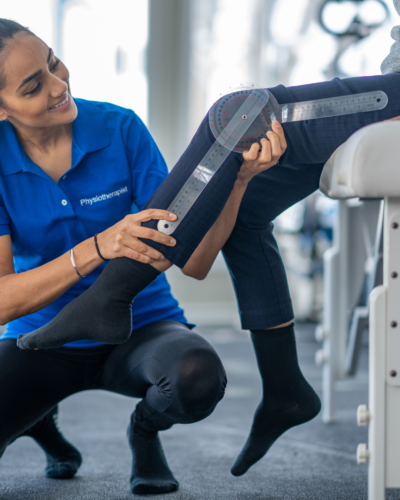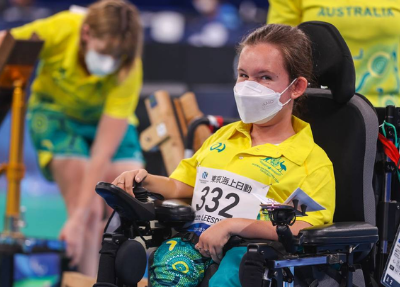Energy In Energy Out: Looking After Your Body
For people with a neuromuscular condition, maintaining a healthy weight is often a balancing act - enough weight to be healthy but not too much that it’s unhealthy or your muscles can’t move as well. It’s the same with exercises - enough to maintain your strength but not too much that you injure or tire yourself. While no one knows your body better than you, here are some food and exercise recommendations to keep your body feeling its best as well as what our community does!
For people with a neuromuscular condition, maintaining a healthy weight is often a balancing act - enough weight to be healthy but not too much that it’s unhealthy or your muscles can’t move as well. It’s the same with exercises - enough to maintain your strength but not too much that you injure or tire yourself.
While no one knows your body better than you, here are some food and exercise recommendations to keep your body feeling its best as well as what our community does!
Staying hydrated
What is recommended:
The human body is made up of nearly 75% water, so staying hydrated should be a priority for physical and mental health. Daily recommendations (as according to the Victoria Department of health) include:
1.5 litres (4-6 cups) for Children.
2 litres (8 cups) for Women
2.6 litres (10 cups) for Men
Of course, these are just recommendations and the amount you need to drink depends on various lifestyle components, such as how much you sweat or whether you’ve consumed foods with high salt. You should talk to your doctor about this.
Sometimes, you may feel hungry because you are dehydrated, so always have some water on hand. Putting lemon or lime in your drinks can help make them more enjoyable and mix things up. While having flavoured water does increase the sugar level slightly, it’s still better than having soft drinks or sweetened beverages.
If you’re needing to stay hydrated but want to increase your calorie intake, fruit smoothies or juice is a great option! However, as with everything, it is about balance, so just keep in mind that while they’re fruit based, they are higher in sugar than water is.
If you want to drink a sugary drink like a soft drink, avoid having more than one in a day, and ideally, limit yourself to less than a few in one week.
What our community members do:
“I have a drink with me at all times so that I can keep my fluid intake up. During the day it’s a fruit juice to give me energy and easy calories while at night I have water bottles beside my bed. In the afternoon I’ll have a mocha as a snack as this is not only great at including more fluids but it’s a great source of calcium (as I have it with light milk) to help with my bones too.” - Amy, 27 years old, Nemaline Myopathy (NM)
"Wherever I go, I always make sure to bring my trusty red Hydro Flask to stay hydrated throughout the day. I also enjoy my daily kombucha for its gut-health benefits and a fruit protein smoothie to support my muscles and get a dose of essential nutrients from fruits. In the evening, I unwind with a calming cup of chamomile tea, and before bed, I take a small sip of water so my throat isn’t dry when I get into bed." - Jack, 22 years old , Becker’s Muscular Dystrophy (BMD)
Food
What is recommended:
The Australian Dietary Guidelines recommends getting a variety of grains, vegetables, protein sources (i.e. tofu, chicken, fish, etc), dairy and dairy alternatives (i.e. almond milk, hemp milk, pea milk), and fruit. It also advises limiting your consumption of alcohol and highly processed foods and drinks (i.e., potato chips, soft drinks, cakes, etc).
However, if you have a neuromuscular condition, you may require more food to meet your energy requirements, especially if you’re on certain medications such as steroids. While eating unhealthy foods is occasionally okay, a good way to meet these requirements is to focus on eating healthy foods with the nutrients your body needs to grow and recover. Talk to your doctor or health professional about getting enough but not too much energy ie food!
What our community members do:
“For grains, maybe in one meal, I will have sourdough bread, and in another, I have brown rice. With veggies, I might have leafy green salad for lunch and for dinner, a range of coloured vegetables like cabbage, cauliflower, carrots, sweet potatoes, and tomatoes. This ensures I meet my five servings of vegetables daily and eat the rainbow. For dairy or alternatives, for one meal, I have cow's milk, and for another, I sometimes have cheese and almon or oat milk. For fruit, maybe in the morning, I have oats and muesli with strawberries, while in the other I will have a pear salad.” Jack, 22 years old, Becker’s Muscular Dystrophy (BMD)
“My standard breakfast is a croissant with melted chocolate which probably isn’t the healthiest according to the standards but it’s a yummy and easy way to get calories. From there my meals definitely look healthier with usually a yogurt for morning tea. For lunch I alternate during the week between hommus and crackers, a sandwich is ham and cheese (add tomato relish if you want it to taste like a healthy cheese burger!) corn crackers with either marmite and cheese (yes I know it’s unAustralian to not have vegemite) or avocado and feta. Sunday is my cheat day with loaded fries (sour cream and sweet chilli), but I think it’s important to allow yourself to have these days and not feel guilty. Afternoon tea is a mocha drink with milk. Dinner is usually a protein with a side of salad or vegetables, a curry or a pasta. I’m not a massive fruit eater so I take extra vitamins to help ensure my body is still getting everything it needs.” - Amy, 27 years old, Nemaline Myopathy (NM)
Meal Suggestions and Ideas
Looking for some healthy but filling meal ideas? We’ve got your meal planner covered with these delicious suggestions
Main meal ideas
Stir-fry with meat or a plant-based protein source like tofu
Lentil/pumpkin soup
Tomato pasta, butter ravioli or pasta bake (try using baby tomatoes to make your own pasta sauce)
A meat or plant-based protein source with vegetables or in a salad
Bean/mince curry
Snack ideas:
Carrot sticks or baby cucumbers
Fruit
Nuts
Granola bars
Yoghurt
Whole-grain crackers
Popcorn (packet popcorn is better than microwaveable)
Add these protein and healthy fat sources to help you feel full for even longer:
Sweet potato
Avocado
Edamame beans
Chickpeas
Quinoa
Brown rice
Hommus
Peanut butter
Exercise
What is recommended:
Clean eating alone is not enough to build a healthy lifestyle, so we recommend that you make a point to keep moving and exercise, and make sure to get some form of physical activity everyday. There are no formal guidelines for those with a disability and chronic conditions, but it is essential to keep moving safely. Speak to your doctors to figure out what works best for you.
For those in a wheelchair, there are various options to exercise. This could include seated strength training with resistance bands, wheelchair aerobics where you are able to move the wheelchair forward and backward, dance-like movements, and boxing punches. Arm cycling is another option, and some machines, like rowing machines, can be adapted for wheelchair use. Seated torso twists, if they can be done safely, can also help work your core/stomach muscles.
Exercise can be a great way to release happy hormones and endorphins throughout your body, keeping you feeling good and energised. It also helps your blood circulate and maintain your muscles as much as possible. There are so many other benefits, but the main point is that exercise is good for you and can support you in other areas of your life!
Other forms of exercise may include powerchair sports which provide an excellent opportunity for individuals who use wheelchairs to stay active and enjoy themselves.
What our community members do:
“Swimming is a fantastic and safe way for me to get cardio exercise. I also enjoy walking, using a rowing machine, a ski machine, and an assault bike. I see exercise physiologists and physiotherapists to support me in conducting exercises safely. I have a rubber band and body weight program at home, which helps me activate the muscles but doesn’t break them down as much as lifting weights would. Receiving massages from massage therapists, family, or physiotherapists has helped release the tightness in my muscles. I also use a foam roller, stretching routine, vibration plate, vibration gun, lacrosse ball, and self-massage to support my body.” - Jack, 22 years old, Becker’s Muscular Dystrophy (BMD)
“As someone with a neuromuscular condition who uses a wheelchair for mobility, exercise for me is a little different, however, I definitely have experienced the benefits of it. I do a daily stretches program with my support workers to help maintain my flexibility, as I have issues with tightness, and strength. For more intense exercise, I do hydrotherapy with a physiotherapist. Not only is it a great workout, but I love it as in the water I’m almost weightless, meaning that I have more movement and freedom. It’s a win win situation.” - Amy, 27 years old, Nemaline Myopathy (NM)
Have advice, 'how to' guides or a story you want to share? We want to hear from you!
You can submit your story or guide via our form. Provided your content meets our content requirements, your post will be published by a Loop moderator to the Living Life section.
Share your story



Join the conversation